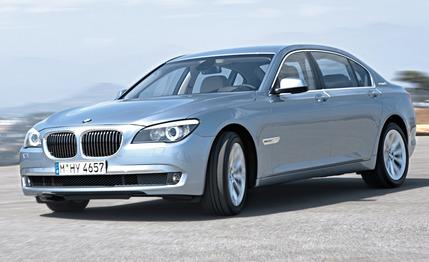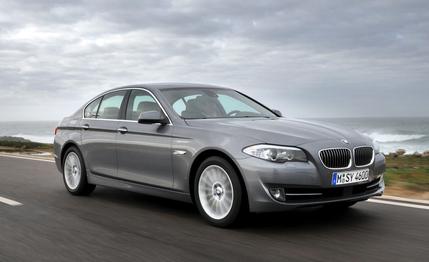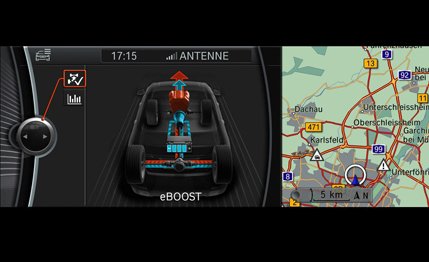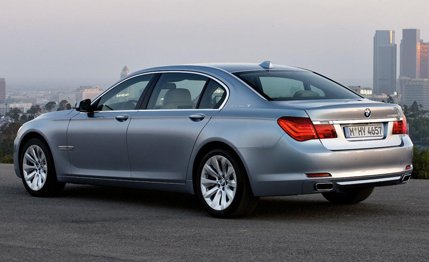 Short Take Road Test
Short Take Road Test
This version of the story adds test numbers to our First Drive from October 2009.

BMW seems to be on a mission lately to offer something for everyone, no matter how nonsensical a certain consumer’s particular set of needs and wants may be. Case in point: the brilliant X6 and its mutant half-sister, the 5-series Gran Turismo. The latest in Bavaria’s barrage of the bizarre, the ActiveHybrid 7-series—a full-size “luxury performance” hybrid—seems to actually make sense relative to those two. It doesn’t hurt the argument for its existence that a competitor from Lexus, the LS600hL, has been on the road for three years now.
What makes the ActiveHybrid 7—available in both short- and long-wheelbase forms—strange is BMW’s boast that it is the quickest hybrid sedan on the market. If speed is the objective, we’re not sure why a hybrid is the answer. Likewise, if fuel economy is the end goal, tuning the twin-turbo V-8 gas engine for an additional 40 hp and 30 lb-ft of torque seems silly. However, if a 7-series customer believes he needs a car more powerful than the 750i but doesn’t want to step up to the 12-cylinder 760Li—which we think he should—and also wants 15 percent or so better fuel economy, BMW has just the model.

BMW’s engineers claim they set out to increase fuel economy, and the performance gains are a secondary benefit they hadn’t intended, but that sounds like PR script to us. No dim bulbs, they probably had a hunch that adding a bunch of extra power and torque would make the car quicker. Regardless of whether or not they had that hunch, we did, and we were right: In our testing, the 750Li ActiveHybrid went from 0 to 60 mph in 4.5 seconds and through the quarter-mile in 12.8 at 112 mph. That’s 0.7 second quicker to 60 and 0.9 quicker through the quarter than the last non-hybrid 750Li to wear our test gear. More (un)importantly, it’s 0.9 second quicker to 60 than the last LS600hL we tested. A brief blast around the high-speed oval confirms that the hybrid 7 rockets to its 147-mph governor without any of the lethargy commonly associated with hybrids. Later on, driving more like downtrodden suburban Americans, we saw 21 mpg.
So It’s Fast. Now Drive It Like a Hybrid
Okay, so you really care about the hybrid bits? This hybrid won’t glide about on electric power and smugness alone. You want motion, you’re going to have to choke the planet with the internal-combustion engine. There’s an electric motor sandwiched between the gas engine and the torque converter in the eight-speed automatic transmission. It contributes an additional 20 hp and 155 lb-ft—combined powertrain output is 455 hp and 515 lb-ft—and allows the engine to sit quiet at stops, as it powers the accessories. Although it isn’t a completely seamless stop and start, the transition doesn’t call attention to itself.
Our larger complaint is that, although the engine fires up as soon as you lift your foot from the brake, if you snooze at a light or are inching through a left-turn lane waiting for a break in traffic, a quick leap from brake to gas beats the re-ignition process and results in a herky jerk forward. However, if you plan on a quick dive for the gas, you can disable the stop/start feature by putting the shifter into Sport mode.
Braking with Convention
This 7’s hybridity also is inconspicuous under braking, which the car manages extremely well, screeching to a halt from 70 mph in just 160 feet—better by 7 feet than the last Audi S4 we tested. Although the mere mention of regenerative braking usually erodes the feel of the stop pedal in question, the ActiveHybrid 7’s brakes remain firm and linear. The car lurches slightly under deceleration, but it is the fault of the transmission downshifting. We noticed the same thing in our long-term 7-series. Of course, the fact that the transmission is causing the disruptions and not the brakes doesn’t lessen the obnoxiousness or somehow make it more welcome in an otherwise serene car.
A hybrid setup like this car’s requires a smaller battery than more-advanced systems, and the 7 hides its lithium-ion pack under the trunk floor. It deals a meager one-cubic-foot blow to trunk volume—dropping it from 14 to 13—leaving BMW with a one-cube advantage over the LS600hL. BMW engineers tell us trunk space is the reason the hybrid 7-series and ActiveHybrid X6—which launched simultaneously—use different systems. Although the X6’s full-hybrid setup allows for greater gains in fuel economy, its larger battery would have consumed more of the already-tight trunk space. Also, BMW is quick to point out that the battery in the trunk helps preserve the 7’s weight distribution, which is the same 51.5/48.5-percent front/rear for the long-wheelbase car as it is for the non-hybrid version, while the stubbier model pushes a bit more rearward for 51.3/48.7. Weight increases by about 250 pounds from the hybrid components and the beefier rear axle borrowed from the V-12 7-series, necessitated by the increased torque load.
Look, Ma, Fewer Emissions!
Like other hybrids based on plain old polluters, the hybrid 7-series relies on badging to convey its uniqueness, although it’s not so subtle compared with other 7s. “ActiveHybrid 7” badges adorn the trunklid and C-pillars, and there’s also a unique 19-inch wheel design and a bespoke Bluewater Metallic color. (We’d have gone with a nice peaceful gray and called it “Blackwater Metallic.”)

Interior cues are limited to some tweaks to the instrumentation—an instant fuel-economy meter and the battery-charging monitor live in the lower part of the tach—and additional displays in the vehicle-information screen. One, a bar graph, shows how active the hybrid system has been for the past 15 minutes, and the other shows the usual hybrid energy flow in beautiful high definition. Otherwise, it’s the same old 7-series, which is to say it is attractive, spacious, and comfortable (especially in long-wheelbase form).
How Much Did Captain Planet’s Costume Cost?
It is not, however, the same old pricing. Like the ActiveHybrid’s acceleration, its sticker price gets a little electronic boost. Short-wheelbase cars start at $103,175, nearly 20 grand higher than the $83,375 commanded by the non-hybrid 750i. A long-wheelbase car like the one tested here starts at $107,075, a similar leap over its regular counterpart. The hybrid at least includes a few extras, like an upgraded stereo and head-up display, that bring the pricing difference down a few grand. Of course, there’s also that 740i to think about. It offers nearly equivalent fuel economy (EPA ratings of 17/25 mpg, and 20 in our hands), is just a touch slower off the line (0–60 in 5.1 seconds), and starts about $32,000 less than the hybrid.
If you think you need a hybrid badge to save the world, you’re wrong. But now there are two ways to spend $100,000 on a full-size luxury hybrid sedan. (We’re not counting the Mercedes-Benz S400 hybrid because it only uses a V-6 and its base price of only $91,875 would get you laughed at by your neighbors.) We’d buy this one. Then again, if BMW and Lexus were buying retired tugboats, lining them in leather, and putting wheels on them for street use, we’d have an opinion on which of those to buy, too. But that wouldn’t make it any less of a goofy purchase.
